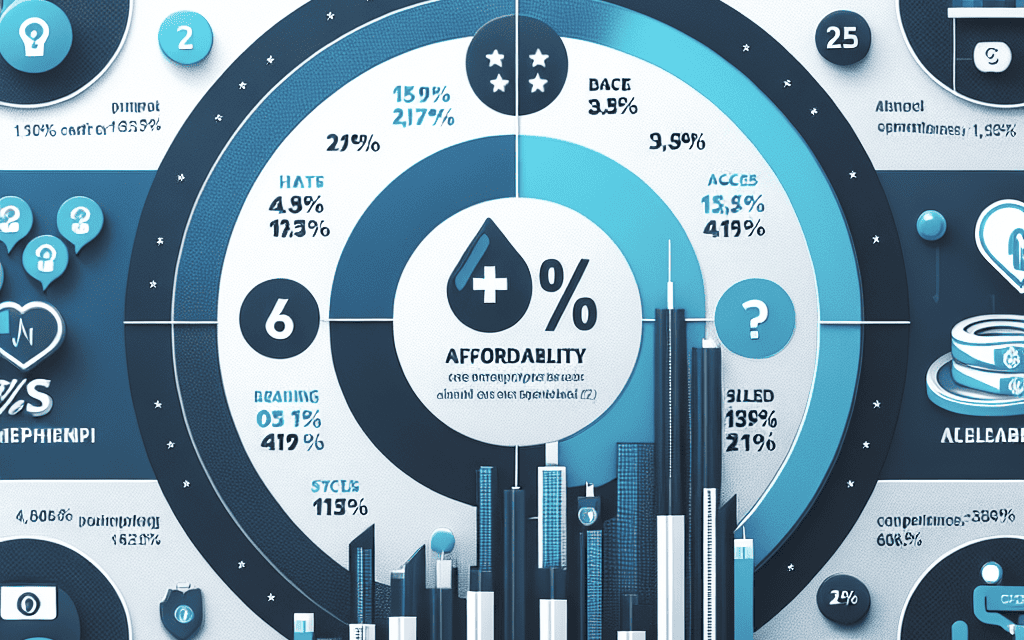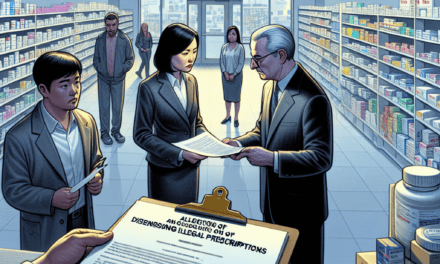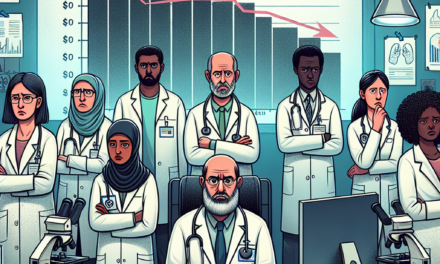Access and Affordability: Americans’ Key Healthcare Concerns According to Gallup
Healthcare in the United States has long been a contentious issue, with access and affordability consistently ranking as top concerns among Americans. According to Gallup, a leading analytics and advisory company, these two factors significantly influence public opinion on healthcare policy and reform. This article delves into the complexities surrounding access and affordability in American healthcare, exploring the underlying issues, statistics, and potential solutions.
Understanding Access to Healthcare
Access to healthcare refers to the ability of individuals to obtain necessary medical services. This encompasses a range of factors, including availability of healthcare providers, geographic location, insurance coverage, and financial barriers. The Gallup polls consistently show that a significant portion of the American population struggles with access to healthcare services.
The Role of Insurance Coverage
Insurance coverage is a critical determinant of access to healthcare. According to the U.S. Census Bureau, approximately 8% of Americans were uninsured in 2020, a figure that has fluctuated over the years due to policy changes and economic conditions. The Affordable Care Act (ACA) aimed to reduce the number of uninsured individuals by expanding Medicaid and creating health insurance marketplaces. However, despite these efforts, many Americans still face barriers to obtaining insurance.
- Medicaid Expansion: States that opted for Medicaid expansion under the ACA saw significant reductions in uninsured rates. For instance, states like California and New York reported drops in uninsured rates by over 30%.
- Marketplace Challenges: While the ACA created marketplaces for individuals to purchase insurance, many still find premiums and deductibles unaffordable. A 2021 Gallup poll indicated that 45% of Americans believe that health insurance is too expensive.
- Employer-Sponsored Insurance: The majority of Americans receive health insurance through their employers. However, rising costs have led many employers to increase employee contributions, making it harder for workers to afford coverage.
These factors contribute to a significant number of Americans delaying or forgoing necessary medical care due to cost concerns. A 2022 Gallup poll revealed that 29% of Americans reported not seeking medical care in the past year due to high costs, highlighting the urgent need for reform in insurance coverage and access.
Geographic Disparities in Access
Geographic location plays a crucial role in determining access to healthcare services. Rural areas often face significant challenges, including a shortage of healthcare providers and facilities. According to the National Rural Health Association, rural Americans are more likely to be uninsured and have limited access to specialists.
- Provider Shortages: Many rural areas lack sufficient healthcare providers, leading to longer wait times and reduced access to care. For example, a report from the Health Resources and Services Administration (HRSA) indicated that over 60 million Americans live in Health Professional Shortage Areas (HPSAs).
- Transportation Barriers: Rural residents often face transportation challenges, making it difficult to reach healthcare facilities. A study published in the Journal of Rural Health found that 25% of rural residents reported transportation as a barrier to accessing care.
- Telehealth Solutions: The COVID-19 pandemic accelerated the adoption of telehealth services, providing a potential solution for rural residents. However, disparities in internet access still pose challenges for many.
Addressing geographic disparities in access requires targeted policies that incentivize healthcare providers to practice in underserved areas and expand telehealth services to reach those in need.
The Affordability Crisis in American Healthcare
Affordability is another critical concern for Americans when it comes to healthcare. Rising costs of medical services, prescription drugs, and insurance premiums have led to a growing affordability crisis. Gallup’s data indicates that many Americans are increasingly worried about their ability to pay for healthcare.
Rising Healthcare Costs
The cost of healthcare in the United States has been rising steadily for decades, outpacing inflation and wage growth. According to the Centers for Medicare & Medicaid Services (CMS), national health expenditures reached $4.1 trillion in 2020, accounting for nearly 20% of the GDP.
- Hospital Costs: Hospital prices have surged, with a 2021 report from the American Hospital Association indicating that hospital expenses increased by 6.5% from 2019 to 2020.
- Prescription Drug Prices: The cost of prescription drugs has also skyrocketed, with a 2021 Gallup poll revealing that 18% of Americans reported not filling a prescription due to cost.
- Administrative Costs: The U.S. healthcare system is burdened by high administrative costs, which account for approximately 25% of total healthcare spending. Streamlining administrative processes could lead to significant savings.
These rising costs have led many Americans to make difficult choices regarding their healthcare, often prioritizing essential services while forgoing preventive care or necessary treatments.
Impact on Health Outcomes
The affordability crisis has profound implications for health outcomes in the United States. When individuals cannot afford necessary care, they are more likely to experience worsening health conditions and increased mortality rates.
- Delayed Care: A study published in the American Journal of Public Health found that individuals who delay care due to cost are more likely to experience complications and require more expensive treatments later.
- Chronic Conditions: Many Americans with chronic conditions, such as diabetes or hypertension, struggle to afford medications and regular check-ups, leading to poorer health outcomes.
- Emergency Room Visits: High costs often lead individuals to seek care in emergency rooms, which are more expensive than primary care visits. This can result in a cycle of debt and worsening health.
Addressing the affordability crisis requires comprehensive reforms that target the root causes of rising costs and ensure that all Americans have access to affordable healthcare services.
Public Opinion on Healthcare Reform
Public opinion plays a significant role in shaping healthcare policy in the United States. Gallup’s polling data reveals that Americans are increasingly concerned about access and affordability, leading to calls for reform.
Support for Universal Healthcare
In recent years, there has been a growing movement advocating for universal healthcare coverage. According to a 2021 Gallup poll, 58% of Americans support a government-run healthcare system that provides coverage for all citizens.
- Medicare for All: Proponents of Medicare for All argue that a single-payer system would reduce administrative costs and ensure that all Americans have access to necessary care without financial barriers.
- Public Option: Some policymakers advocate for a public option that would allow individuals to buy into a government-run insurance plan, providing more affordable choices in the marketplace.
- State-Level Initiatives: Several states have explored their own healthcare reforms, such as California’s proposed single-payer system, highlighting the demand for innovative solutions at the state level.
While public support for universal healthcare is growing, significant political and logistical challenges remain in implementing such reforms.
Concerns About Quality of Care
As discussions around access and affordability continue, concerns about the quality of care also emerge. Many Americans worry that expanding access could lead to a decline in the quality of healthcare services.
- Provider Shortages: Expanding access without addressing provider shortages could lead to longer wait times and reduced quality of care.
- Overburdened Systems: A sudden influx of patients into the healthcare system could strain resources and impact the quality of care provided.
- Maintaining Standards: Ensuring that quality standards are maintained while expanding access is crucial to gaining public trust in any proposed reforms.
Balancing access, affordability, and quality will be essential in any future healthcare reforms to ensure that all Americans receive the care they need without compromising standards.
Potential Solutions and Innovations
Addressing the issues of access and affordability in American healthcare requires innovative solutions and a multi-faceted approach. Policymakers, healthcare providers, and communities must work together to develop strategies that improve access and reduce costs.
Expanding Telehealth Services
The COVID-19 pandemic has accelerated the adoption of telehealth services, providing a valuable tool for improving access to care. Telehealth can help bridge the gap for individuals in rural areas or those with mobility challenges.
- Increased Access: Telehealth can reduce travel barriers and allow patients to consult with healthcare providers from the comfort of their homes.
- Cost-Effectiveness: Telehealth services can be more cost-effective than in-person visits, potentially reducing overall healthcare costs.
- Integration with Traditional Care: Combining telehealth with traditional care can enhance patient outcomes and streamline healthcare delivery.
However, ensuring equitable access to telehealth services requires addressing disparities in internet access and technology availability.
Policy Reforms for Affordability
Comprehensive policy reforms are essential to address the affordability crisis in American healthcare. Policymakers must consider a range of strategies to reduce costs and improve access.
- Prescription Drug Pricing: Implementing measures to control prescription drug prices, such as allowing Medicare to negotiate prices, could significantly reduce costs for consumers.
- Value-Based Care Models: Transitioning to value-based care models that prioritize patient outcomes over volume can help reduce unnecessary spending and improve care quality.
- Insurance Market Reforms: Strengthening regulations on insurance companies to ensure fair pricing and coverage options can enhance affordability for consumers.
These reforms require collaboration between federal and state governments, healthcare providers, and insurance companies to create a more sustainable healthcare system.
Conclusion: A Call for Action
Access and affordability remain critical concerns for Americans, as highlighted by Gallup’s polling data. The complexities surrounding these issues require a comprehensive understanding of the factors at play, including insurance coverage, geographic disparities, rising costs, and public opinion on reform.
As the healthcare landscape continues to evolve, it is essential for policymakers, healthcare providers, and communities to work together to develop innovative solutions that address these challenges. By prioritizing access and affordability, we can create a healthcare system that serves all Americans effectively and equitably.
In summary, the key takeaways from this article include:
- The importance of insurance coverage and its impact on access to healthcare.
- The significant geographic disparities that affect rural populations.
- The rising costs of healthcare and their implications for affordability.
- The growing public support for universal healthcare and concerns about quality.
- The need for innovative solutions and policy reforms to address access and affordability challenges.
As we move forward, it is crucial to keep these issues at the forefront of healthcare discussions to ensure that all Americans have access to affordable, high-quality care.





